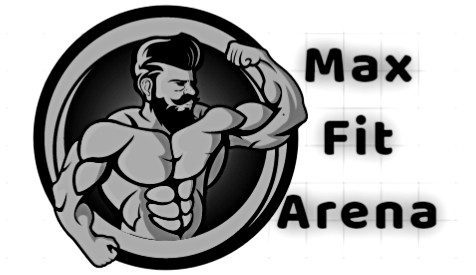The Truth About the Deadlift: Does It Work Your Traps?

The deadlift is one of the most popular weightlifting exercises. It is often cited as one of the best exercise. But does deadlift work traps? In this blog post, we will take a look at the evidence and find out if the deadlift does work your traps!
Overview

The traps are a group of muscles located in the upper back. They are responsible for stabilizing the shoulder girdle and helping to raise and lower the arms. The main muscle in the traps is the trapezius, which extends from the base of the skull to the middle of the back.
The deadlift is an exercise that works a variety of muscles, including traps. When you perform a deadlift, you are essentially lifting the weight off of the ground. This requires you to use your back muscles, including your traps, to stabilize the weight and lift it up.
Does Deadlift really work traps?
There is evidence to suggest that the deadlift does work your traps. A study published in the Journal of Strength and Conditioning Research found that the deadlift does indeed activate the trapezius muscle.
So, if you are looking for exercise to work your traps, the deadlift is a good option. Just be sure to use proper form and technique to avoid injury. And always consult with a doctor or certified personal trainer before starting any new exercise routine.
Benefits of Deadlift
In addition to working your traps, the deadlift is an essential movement for overall strength and power development. In fact, many experts consider it the king of all exercises. Here are just a few of the benefits of this powerful move:
- Deadlifts work almost every muscle in your body.
- They help to improve your grip strength.
- Deadlifts can help to improve your posture.
- They are also great for building mental toughness.
- Deadlifts can help to prevent injuries by strengthening the muscles and connective tissues around your joints.
So, if you’re looking for a way to take your fitness to the next level, start doing some deadlifts! You’ll be amazed at the results.
How to perform Deadlift
Deadlifts are a great way to work your back, legs, and core all at once. But they’re also notoriously difficult to get right. Here’s a step-by-step guide to performing a proper deadlift:
- Start with your feet shoulder-width apart and your hips back. Bend your knees and lower your hips until your shins touch the bar.
- Grab the bar with an overhand grip, keeping your hands just outside of your legs.
- 3Brace your core and lift your chest up tall. This is your starting position.
- From here, drive through your heels to stand up tall, leading with your hips until the bar is in front of your thighs.
- Reverse the motion and lower the bar back to the ground, keeping your back flat and core engaged the entire time. That’s one rep!
Performing a proper deadlift requires both strength and technique. If you are new to the exercise, it is best to seek guidance from a certified personal trainer or doctor before attempting it on your own. With practice, however, you will be able to perform this exercise safely and effectively.
Best Exercise for Traps
One of the most common questions I get asked is what sort of exercises people can do to work on their traps. The trapezius is a large, triangular muscle that extends from the base of the skull to the middle of the back. It’s responsible for moving, rotating, and stabilizing the shoulder joint. And while it’s not the most aesthetically pleasing muscle, strong traps are essential for good posture and injury prevention.
There are plenty of exercises that work the traps, but these are the cream of the crop. If you want to add some serious size to your yoke, try out these moves.
- Upright rows: This trap-building exercise is performed by holding a barbell in front of your thighs, with your palms facing your body. From here, lift the barbell straight up until it reaches chin level. Lower it back down to the starting position and repeat.
- Shrugs: One of the most popular trap exercises, shrugs can be done with dumbbells, a barbell, or even just a resistance band. Simply raise your shoulders as high as possible, then lower them back down and repeat.
- Front raises: This exercise works the front delts and traps simultaneously. Start by holding a dumbbell in each hand in front of your thighs, with your palms facing your body. From here, slowly raise one dumbbell straight out in front of you until it’s at shoulder level. Lower it back down and repeat with the other arm. Alternate sides for reps.
- Bent-over lateral raises: Another great compound move, bent-over lateral raises work the rear delts, lats, and traps all at once. Start by holding a dumbbell in each hand and hinge forward at the hips until your torso is parallel to the ground. With a slight bend in your elbows, raise your arms out to the sides until they’re at shoulder level. Lower them back down and repeat for reps.
- Face pulls: Face pulls are a great exercise for targeting the rear delts and traps, but they also work the biceps and forearms as well. To do them, start by attaching a rope handle to a cable machine and setting it to shoulder height. Grasp the rope with your palms facing each other and pull it towards your face until your hands reach your ears. Return to the starting position and repeat for reps.
Conclusion
The deadlift is a popular weightlifting exercise that does indeed work your traps. However, it is important to use proper form and technique when performing this exercise, as it can be dangerous if done incorrectly. There are also a variety of other exercises that work the traps, such as upright rows, shrugs, and face pulls. Ultimately, the best exercise for your traps depends on your individual goals and fitness level. Consult with a certified personal trainer or doctor before beginning any new workout routine.
Reference
